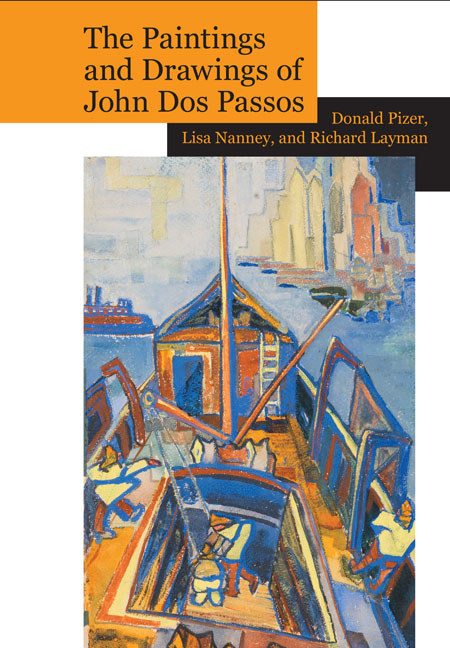The Artwork of John Dos Passos
Summary
Career
John Dos Passos was a prolific drawer and painter over a period of more than 50 years. He filled at least eleven sketchbooks, probably more, between 1918 and 1920, while he was in Italy during the war and afterward in Paris and Barcelona. Robert Nathan commented on the paintings in Dos Passos's Greenwich Village apartment, where he lived in fall 1922, that there were “a great many and none were hung.” Adelaide Lawson commented that “Dos was always dropping by and leaving his sketches and watercolors with me. Most of them he never reclaimed.” He exhibited more than 120 paintings in New York between 1922 and 1937 (see the checklist below). Later in his life he is said to have painted regularly. The suggestion is that he painted well more than we have discovered.
Roughly 350 images of Dos Passos's artwork have been identified. The bulk of that work, some 300 separate paintings and 10 sketchbooks of between 20 and 44 leaves, are in the possession of his daughter, Lucy Coggin. Two hundred and fifty-four of those paintings, about a dozen of which have images on both verso and recto, were inventoried in 1999, when Ms. Coggins's collection was on deposit at the Thomas Cooper Library, University of South Carolina. Another 20 or so paintings and at least one more sketchbook are known to be in private collections. The originals for many of Dos Passos's known paintings have not been located—including the five that appear on dust jackets; the eight tipped-in illustrations (one of which is reproduced on the jacket) that appear in Orient Express (1927), at least two of which were exhibited in 1923; eight of the nine drawings that appear in The Best Times (1966); and the twelve illustrations in Blaise Cendrars's Panama or the Adventures of My Seven Uncles, translated by Dos Passos in 1931. In addition, a handful of his unlocated artworks have been reproduced in various newspapers and journals cited on the checklist below.
Most of Dos Passos's artworks are watercolors, though there are some in gouache, pastels, and charcoal; he often drew in pencil in his sketchbooks. “Water-colors are too convenient,” he explained to an anonymous interviewer in Literary Digest ; “They're simple to travel with, they dry quickly, and I like them.” Verbal identification of his paintings is unreliable.
- Type
- Chapter
- Information
- Publisher: Liverpool University PressPrint publication year: 2016



